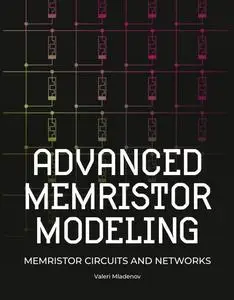Advanced Memristor Modeling: Memristor Circuits and Networks by Valeri Mladenov
English | PDF | 2019 | 186 Pages | ISBN : 3038971049 | 64.97 MB
The investigation of new memory schemes, neural networks, computer systems and many other improved electronic devices is very important for future generation's electronic circuits and for their widespread application in all the areas of industry.
In this aspect the analysis of new efficient and advanced electronic elements and circuits is an essential field of the highly developed electrical and electronic engineering. The resistance-switching phenomenon, observed in many amorphous oxides has been investigated since 1970 and it is a promising technology for constructing new electronic memories. It has been established that such oxide materials have the ability for changing their conductance in accordance to the applied voltage and memorizing their state for a long-time interval. Similar behaviour has been predicted for the memristor element by Leon Chua in 1971. The memristor is proposed in accordance to symmetry considerations and the relationships between the four basic electric quantities - electric current i, voltage v, charge q and magnetic flux Ψ. The memristor is an essential passive one-port element together with the resistor, inductor, and capacitor. The Williams HP research group has made a link between resistive switching devices, and the memristor proposed by Chua. A number of scientific papers related to memristors and memristor devices have been issued and several memristor models have been proposed. The memristor is a highly nonlinear component. It relates the electric charge q and the flux linkage, expressed as a time integral of the voltage. The memristor element has the important capability for remembering the electric charge passed through its cross-section and its respective resistance, when the electrical signals are switched off. Due to its nano-scale dimensions, non-volatility and memorizing properties, the memristor is a sound potential candidate for application in computer high-density memories, artificial neural networks and in many other electronic devices.
i will be very grateful when you support me and buy Or Renew Your Premium from my Blog links
i appreciate your support Too much as it will help me to post more and more
Without You And Your Support We Can’t Continue
Thanks For Buying Premium From My Links For Support
i appreciate your support Too much as it will help me to post more and more
Without You And Your Support We Can’t Continue
Thanks For Buying Premium From My Links For Support



